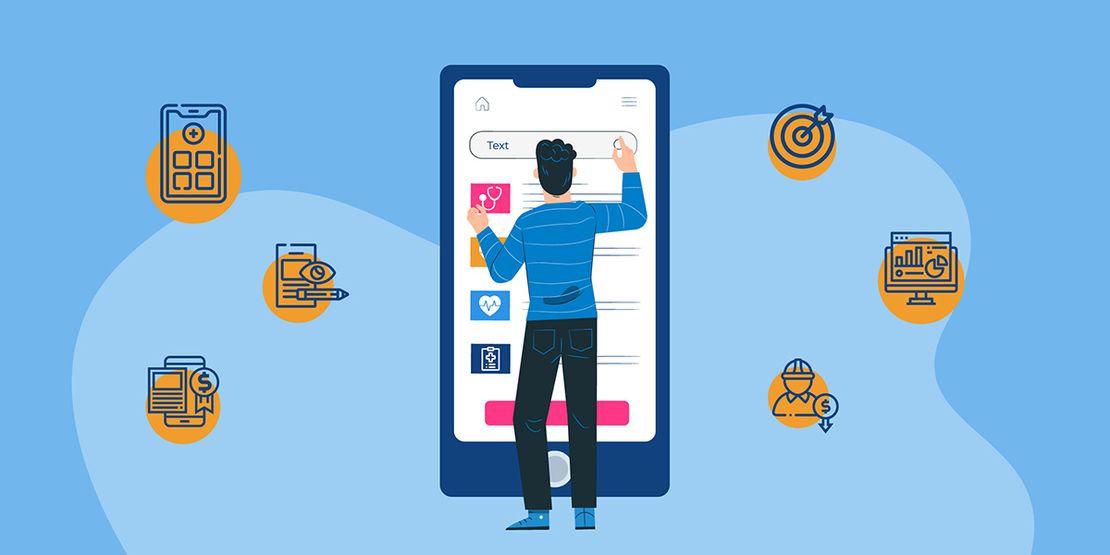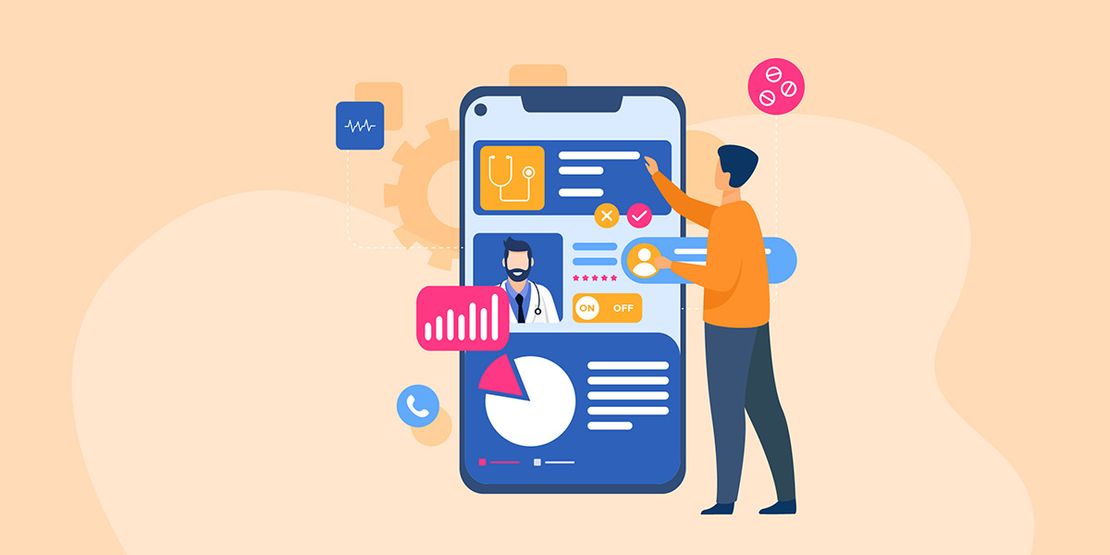Consumer-centric transactions are driving the evolution of the Digital Front Door. All healthcare organizations should give patients access to a robust and user-friendly digital experience via a Digital Front Door.
Below, we outline the features that should be incorporated in a best-in-breed Digital Front Door.
A Single Point of Entry Using a Single Sign-On (SSO)
Patients should be able to gain access to all digital points of care via one entry point, using a single username and password. To achieve this, healthcare organizations using multiple third-party apps will need to consolidate or synthesize these third-party solutions to create a frictionless user experience.
A piecemealed solution frustrates users because it requires them to create multiple usernames and passwords for each touchpoint, but it can also place healthcare organizations at an increased risk for security issues.
The ideal solution is a mobile app branded to the healthcare system; however, patients should also be able to log in to the healthcare system’s website to gain access to the entire patient engagement platform.
Seamless Integrations
The ability for healthcare organizations to meaningfully integrate multiple administrative, clinical, and financial solutions in order to provide a user-friendly patient experience is arguably the most important part of advocating the use of a Digital Front Door.
Many organizations currently offer a clunky and frustrating digital experience that involves multiple logins to different websites. Offering a user-friendly patient engagement platform with a single interface that allows patients to navigate all care touchpoints — including appointment scheduling, patient-provider messaging, and bill pay — not only enhances the user experience but encourages further engagement because it is easy to use.
A Mobile-First Design
Medical mobile application use is on the rise. The number of medical apps that were downloaded during the peak months of the COVID-19 pandemic increased by an average of 65% worldwide (the US saw an increase of 30%) compared to January 2020.
Larger healthcare organizations of at least 100 providers should offer a client-branded mobile app that’s available to both iOS and Android users. Smaller organizations who don’t have the budget for a client-branded mobile app should instead make sure that their website and patient portal are completely mobile-friendly.
Interoperability
The final rule of the 21st Century Cures Act places particular emphasis on giving patients full access to and autonomy of their electronic health information. The final rule was specifically written to encourage interoperability between health systems, apps, and devices, and to stamp out information blocking in order to help patients gain access to their health records.
Healthcare organizations that wish to achieve regulatory compliance will leverage an API that is compatible with the most common industry standards, such as Health Level Seven (HL7), Continuity of Care Document (CCD), and Fast Healthcare Interoperability Resource (FHIR), in order to share patient EHI with different healthcare and financial systems.
The new interoperability regulations will hopefully drive patient engagement, lower care costs, and improve health outcomes.
Features That Patients Want
The key to attracting patients to your Digital Front Door is simple: fill it with the features your patients want. Accenture’s 2019 Digital Health Consumer Survey tells us that patients are increasingly demanding digital capabilities from their healthcare providers.
Consider incorporating the following features:
- Appointment scheduling
- Self-scheduling (patient self-scheduling and rescheduling of appointments without live assistance)
- Reminder notifications (reminders via push notifications, SMS, and/or email)
- View appointments
- Find a provider/location
- View wait times
- In-facility maps and navigation
- Transportation options to the facility
- Intake/check-in
- AI chatbot for symptom checker and triage
- Pre-visit education and instructions
- Patient intake forms
- Test Results
- View and download test results
- Bill pay
- Account details
- Price transparency (ability to obtain price estimates and automated verification of insurance coverage without live assistance)
- Telehealth and Virtual Waiting Rooms
- Videoconferencing
- Prescription prescribing
- RPM (remote patient monitoring)
Telehealth and the Digital Front Door
While telehealth is not a new technology, its use increased dramatically during the COVID-19 pandemic. To encourage and support the use of telehealth visits during the COVID-19 pandemic, the Department of Health and Human Services (HHS) granted 15 million dollars in subsidies to providers offering telehealth services.
The use of telehealth will likely continue to expand, even after the COVID-19 pandemic is over. In May of 2020, Blue Cross Blue Shield of Tennessee became the first major insurer to announce that it will continue to cover telehealth visits permanently. While it’s still unclear whether Medicare and Medicaid will continue offering telehealth benefits after the pandemic, they will likely feel pressured to leave some of the policy changes in place.
Healthcare systems looking to incorporate telehealth services into their practice should consider leveraging an out-of-the-box HIPAA-compliant telehealth solution, like the one offered by Bridge Patient Portal, or working with a medical app development company that specializes in customized telehealth solutions, like Medical Web Experts.
What Is Your Digital Front Door Strategy?
Patients are becoming savvy consumers and, due to the COVID-19 pandemic, are demanding a consumer-centric approach to healthcare. The Digital Front Door is your key to engaging patients, fulfilling compliance standards, improving patient outcomes, and increasing revenue. Health organizations hoping to offer a best-in-breed Digital Front Door solution will need to incorporate key features, like single sign-on, interoperability, and mobile-first design into their strategy in order to see increased usership among patients and growth in their business.


